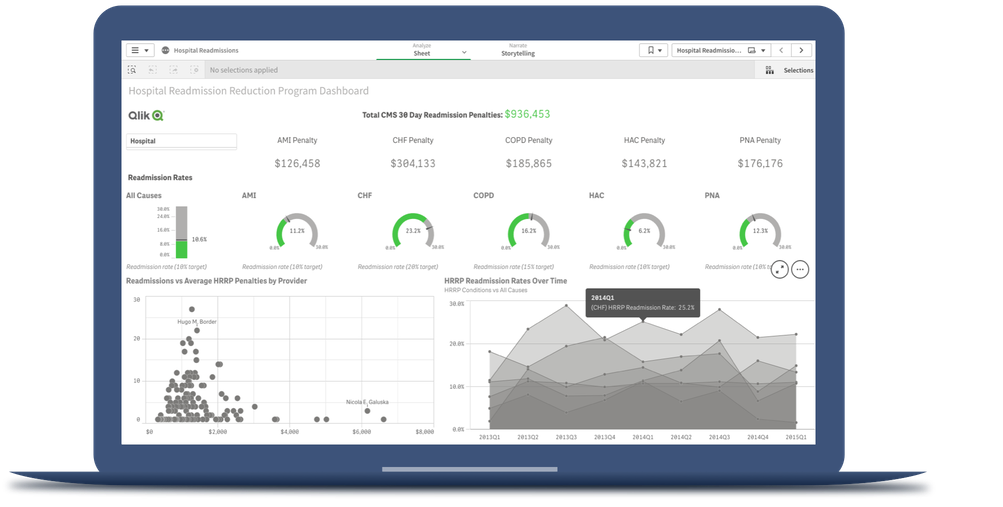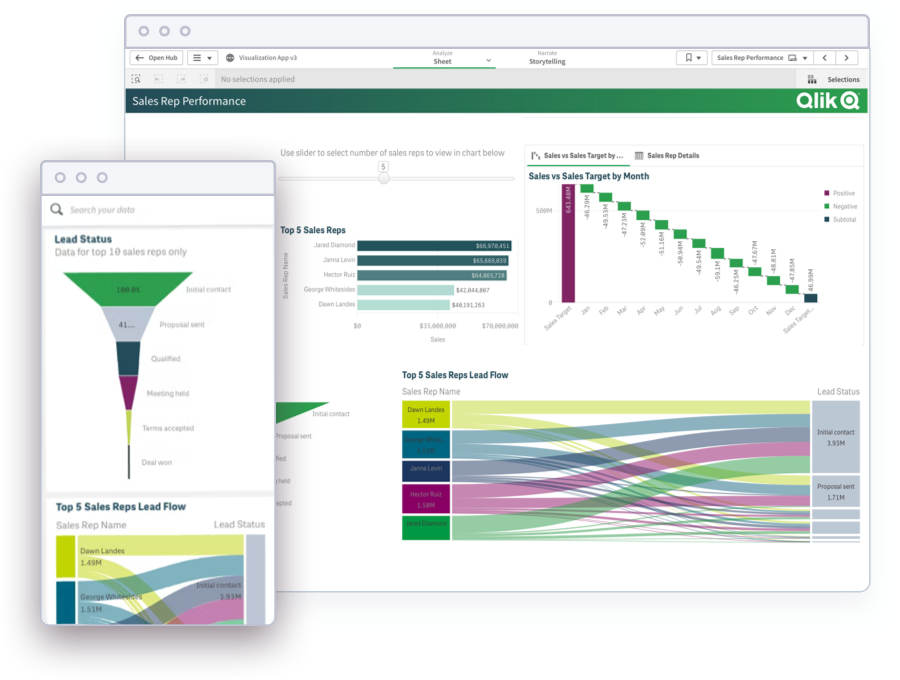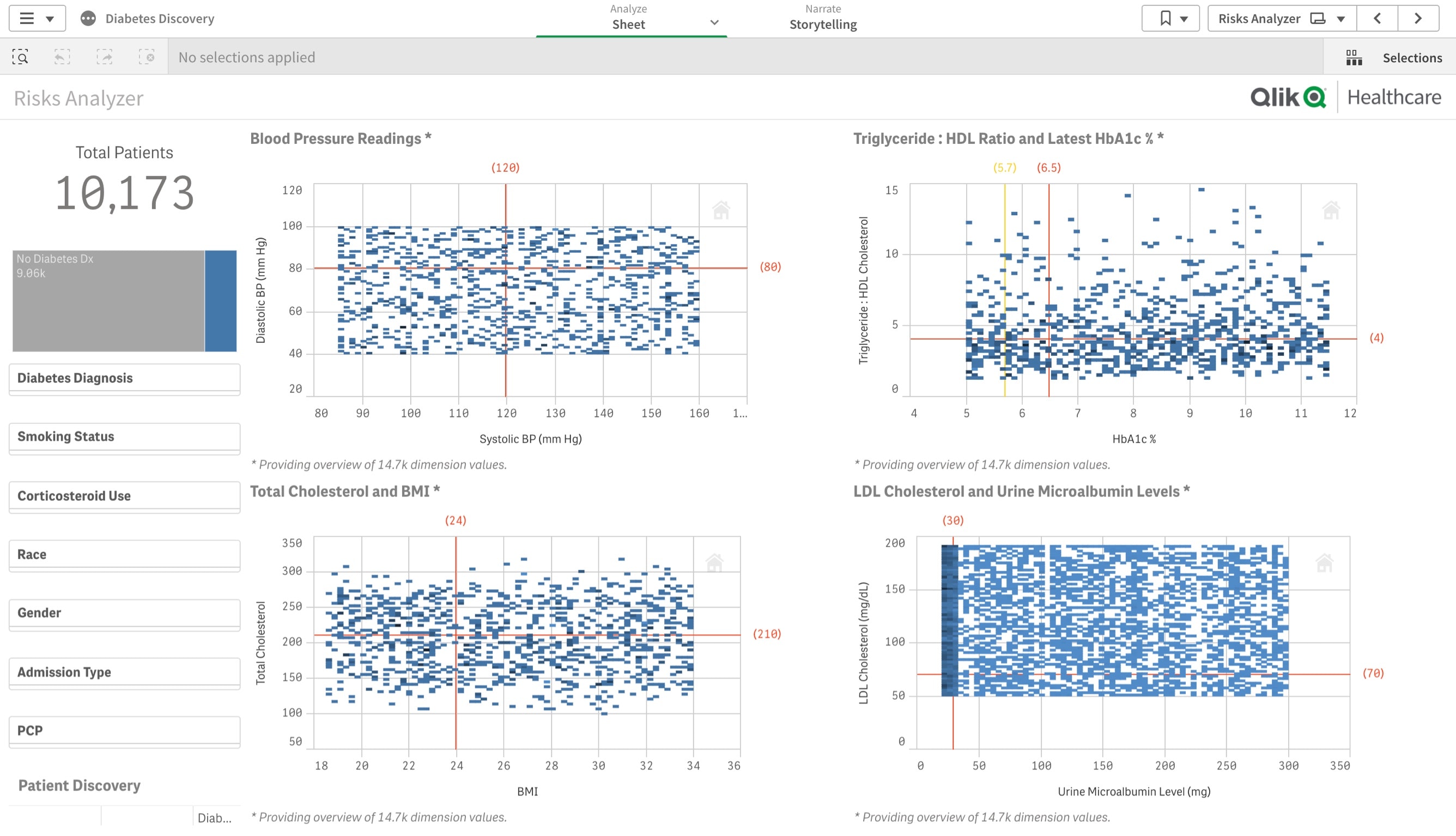
Business Insights
Definition, examples and business value. This guide provides examples and practical advice to help you gain strategic business insights that help take your organization to the next level.
Business Insights Guide
What are Business Insights?
A business insight is a deep understanding of a business situation that has the power to drive an organization forward. Yet, despite what the word “insight” might evoke, very few are reached through flashes of brilliance or gut feelings. The vast majority of strategic business insights come from exploring and analyzing your data to find patterns and trends.
Key Benefits
Your business probably produces vast amounts of data that can be used to inform important decisions. Many organizations struggle to fully understand their data, and are therefore unable to transform it into actionable insights that solve challenges and create better business outcomes. The most strategic business insights come from knowing how to analyze the data, applying creativity and making connections that can benefit the organization.
Finding meaning, patterns and trends in your data — and acting on that knowledge — is what will give your business a competitive advantage. In other words, the better you understand the data that's available to you, the more insights you'll discover.

Modern Analytics Demo Videos
See how to explore information and quickly gain insights.
- Combine data from all your sources
- Dig into KPI visualizations and dashboards
- Get AI-generated insights
Business Insights Examples
While insights will vary greatly based on industry and departments within an organization, there are many examples that can apply to many teams. To illustrate this, below are a few examples of how healthcare business insights can help an organization:
- Improve patient care by finding patterns in readmission data.
- Explore patient-level costs and variations in care.
- Optimize a team's processes to improve overall performance.
- Gain a deeper understanding of at-risk patients.
By reviewing health data from a digital dashboard like the one pictured here, physicians and care coordinators treating patients at risk for diabetes can uncover healthcare business insights by finding patterns in the data that can reveal, among other things, under-diagnosed and undiagnosed cases.
Armed with this data, healthcare professionals can provide preemptive care for these patients and close a potentially large healthcare gap. The dashboard here provides a close look at key indicators for at-risk patients based on race, gender, blood pressure readings, cholesterol levels and more.
Close the gaps between data, insights and action with real-time, Active Intelligence.
How to Gain Business Insights
Insights will vary widely between industries and job roles, but the process of attaining actionable business insights often follows a similar pattern. It begins with defining (and understanding) your business goals, collecting, structuring and managing the data that's relevant to those goals, then analyzing the data to see how your organization is performing against your goals so you can close gaps, spot opportunities for improvement and create real business value.
Let’s take a closer look at each of these steps:
1) Define business goals
It's important for any business team to set clear goals to work toward. Once these goals are defined and agreed on, stakeholders will already have a better idea of key performance indicators they'll need to measure against. For example, a healthcare team might set a goal of improving certain operational efficiencies, or reducing the number of undiagnosed patients in a given quarter.
2) Data collection and storage
Depending on the size of the organization, an appropriate system for collecting and storing raw data has likely been put in place. If not, the organization will need to establish a process for data storage.
3) Data integration and management
Unless you're a data scientist or engineer that works with data in its raw form, your stored data will need to be transformed through data integration so it can be explored and analyzed. Only then can it be considered ready for analysis by managers and business-end users.
4) Data analysis and insights
Data analytics software and BI tools allow stakeholders to explore and analyze their data, measure performance against established KPIs, and collaborate with others on their team to develop strategic business insights that answer specific questions and move the business toward its goals. Users can share their findings across teams via dashboards and reports, promoting data literacy within the organization — and sparking additional insights from other teams. A decision support system can go a step further by automating calculations and delivering best-case decisions.
In the end, strategic business insights are an organization’s most valuable tool for gaining competitive advantage in the marketplace.
Explore more resources on business insights





